 by "ttyymmnn" (ttyymmnn)
by "ttyymmnn" (ttyymmnn)
Published 06/13/2017 at 12:35
 by "ttyymmnn" (ttyymmnn)
by "ttyymmnn" (ttyymmnn)
Published 06/13/2017 at 12:35
Tags: Planelopnik
; planelopnik history
STARS: 13
Welcome to This Date in Aviation History , getting you caught up on milestones, important historical events and people in aviation from June 10 through June 13.
!!! UNKNOWN CONTENT TYPE !!!
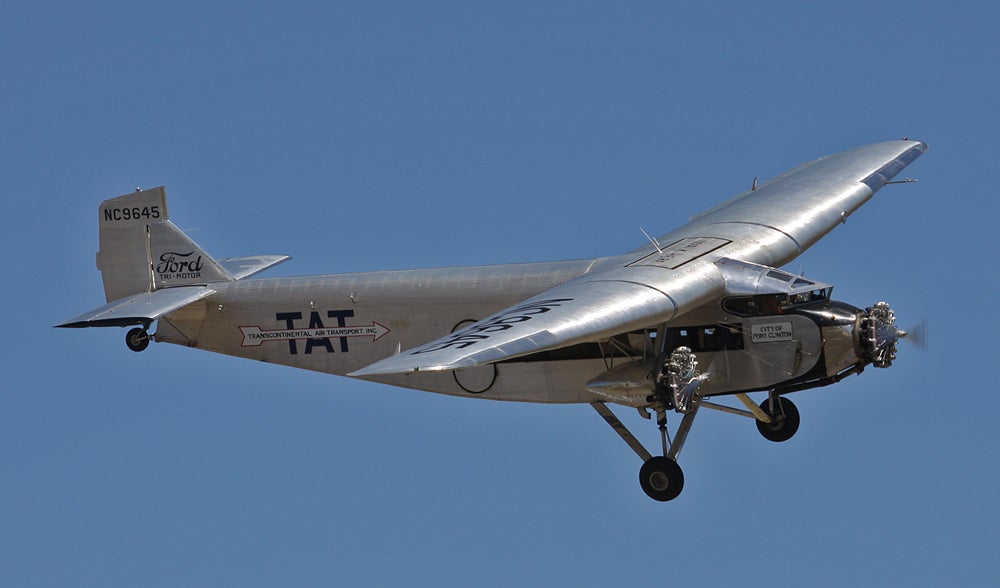
June 11, 1926 – The first flight of the Ford Trimotor. Today, Henry Ford is a name synonymous with automobiles. But back in the 1920s, Ford made a brief foray into aircraft manufacturing when he joined a group of investors in the acquisition of the Stout Metal Airplane Company in 1925. Along with the purchase of the company’s assets, Ford also took control of Stout’s intellectual property, including designs for an aircraft that previous owner, William Stout , had been developing. Stout had been influenced by the pioneering work of Hugo Junkers in the construction of all-metal aircraft in Germany, as well as three-engined aircraft designed by Anthony Fokker. Stout was working on the 3-AT trimotor, the first all-metal aircraft to be certified in the US and a development of the earlier single-engine Stout 2-AT Pullman . Where the 2-AT was relatively successful, the ungainly 3-AT was such an unmitigated disaster that Stout’s test pilot carried out its maiden flight and then refused to fly it again. So when a fire destroyed one of Stout’s hangars, and the 3-AT along with it, Ford was able to make a fresh start on the trimotor, and the first order of business was the removal of William Stout from the design team. The new aircraft was called the 4-AT, and it very closely resembled the Fokker F.VII trimotor, though the Fokker design used far less metal in its construction. The 4-AT also copied Junkers’ wing design, as well as the corrugated metal skin that Junkers had pioneered, which prompted Junkers to sue Ford for patent infringement. Junkers prevailed, and Ford was prevented from marketing his aircraft in Europe.
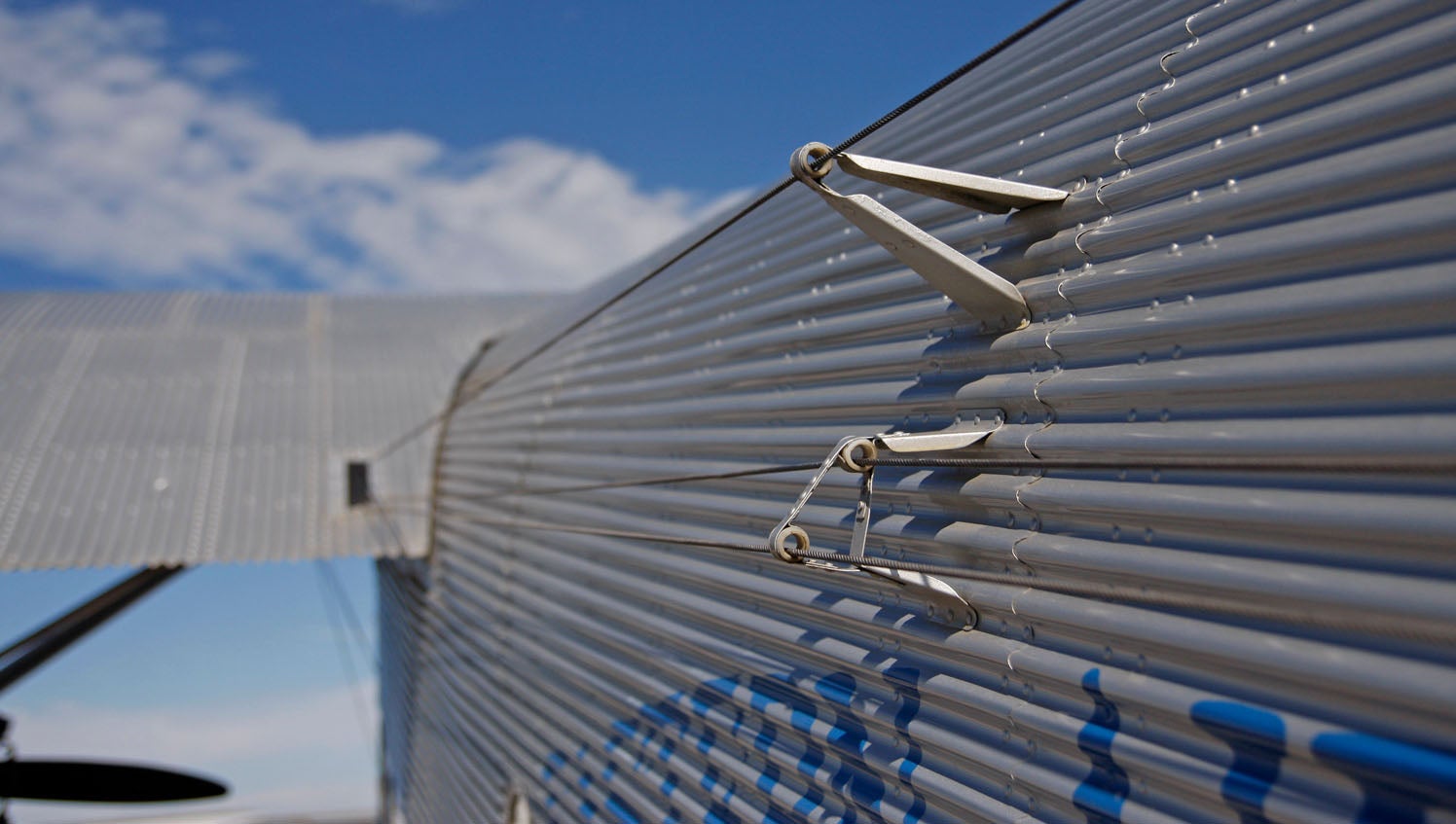
The original Trimotor was powered by three Wright R-790 Whirlwind 9-cylinder radial engines (later variants received a trio of more powerful Pratt & Whitney R-1340 Wasp radials) that gave it a maximum speed of 132 mph and a range of 570 miles. And in much the same way that the Model T had a profound impact on the sale of motor cars in the US, the Trimotor, with accommodation for 8 passengers, had an immediate impact on civilian air transport in the US. Shortly after the arrival of the Trimotor, Transcontinental Air Transport (which eventually became TWA ) was founded by financier Clement Keys , and on July 7, 1929, TAT inaugurated transcontinental service from New York to Los Angeles, with passengers making the 51-hour journey by alternating between rail and air transportation. A ticket for this service cost $338, which would be over $3,800 in today’s dollars . Trimotors were also flown by Pan American Airways to Cuba and other destinations in Central and South America. But the Trimotor was not only used for passenger flights. It set numerous distance records, and US Navy Commander Richard Byrd , with pilot Bernt Balchen , made the first flight over the geographic South Pole in 1937 flying a Trimotor. The aircraft’s rugged construction also made it a popular cargo aircraft. The rapid advance of aircraft technology quickly surpassed the Trimotor and Ford left the airplane business, though his company did produce aircraft under license during WWII. William Stout purchased the rights to the Trimotor in 1954, hoping to modernize the design and to regain a foothold in the aviation industry. But his Stout Bushmaster 2000 was unable to match the performance of more modern aircraft, and only 2 were built. Even though the Trimotor’s heyday as an airliner was relatively brief, it would fly into the 1960s as a rugged and dependable cargo aircraft, and a handful remain flying to this day, taking passengers on a flight back to the Golden Age of aviation. (Photos by the author)
!!! UNKNOWN CONTENT TYPE !!!
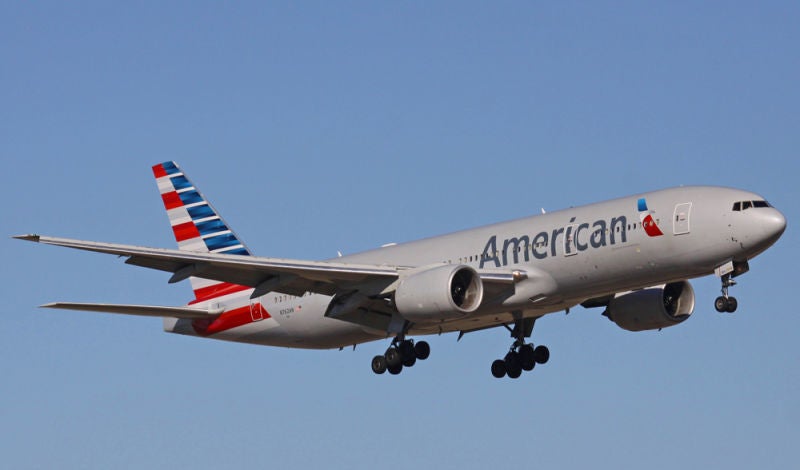
June 12, 1994 – The first flight of the Boeing 777. As the commercial airline industry progressed through the 1950s and 1960s, airliners got longer and longer but not necessarily wider. The Boeing 707 and Douglas DC-8 dominated the market, but they were limited to six-across seating, and there were practical limits on just how long an aircraft could be made. International airlines clamored for higher passenger loads, so the Boeing Company responded with the 747 , the world’s first wide-body airliner, which entered service in 1970. They followed the 747 with the narrow-body 757 and wide-body 767 in response to new airliners manufactured by their main rival Airbus , and both the 757 and 767 were immediately successful and continue flying today. Boeing originally envisioned its next wide-body as a tri-jet, but with new FAA regulations allowing aircraft with just two engines to operate on longer transoceanic routes ( ETOPS ), Boeing had a problem: a gap in range and passenger capacity in their fleet between their 757/767 and the 747. McDonnell Douglas was working to upgrade their earlier tri-jet DC-10 as the MD-11 , and Airbus was in the process of developing the A330 and four-engine A340 . At first, Boeing responded with a stretched 767 called the 767-X, and also proposed a 767 with a larger cross-section while retaining the commonality of the earlier 767 cockpit. But the airlines weren’t interested, saying that they wanted an even wider fuselage with more interior options, intercontinental range, and lower operating costs. So Boeing went back to the drawing board and, using computer-aided design (CAD) for the first time, developed an entirely new airliner and their first to use fly-by-wire controls. As an enticement to the airlines, Boeing allowed them to have a say in the design and development of the aircraft for the first time in industry history. Based on customer input, Boeing designed the 777 with a similar cabin cross-section to the 747 and offered 9-across seating in coach with the ability to accommodate as many as 325 passengers.
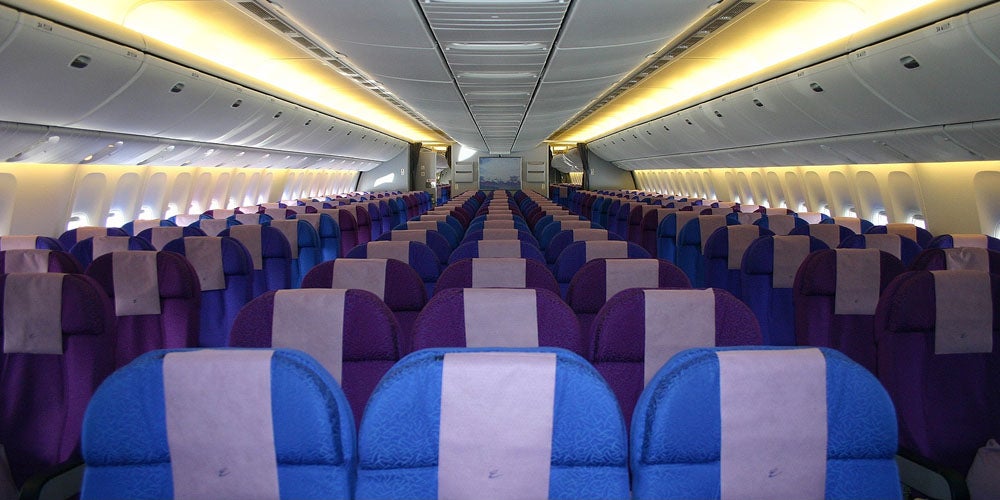
United Airlines was the 777’s launch customer in 1990, and they made very specific route requirements for the new airliner, dictating that the 777 must be able to reach Europe and Hawaii from United’s hubs in Denver and Chicago. Boeing delivered on those demands, and the first 777 entered service with United in 1995 and it is now flown by more than 60 airlines and cargo companies around the world. With variants to increase passenger load and speed, it is now the world’s largest twin-jet, able to seat up to 451 passengers depending on configuration, with a range of up 9,695 miles. It also sports the largest-diameter turbofan of any aircraft in service today with the General Electric GE90 , a high-bypass turbofan capable of up to 115,000 pounds of thrust each. Boeing has received more 777 orders than any other wide-body airliner with almost 1,484 aircraft currently in service and another 427 on order. Boeing also has plans for further development of the 777 with its 777x program, which will see new carbon-fiber-reinforced wings for greater efficiency and folding wingtips for complete airport gate compatibility. The cabin will also be widened and enhanced based on experience learned from development of the 787 Dreamliner . Boeing expects the 777-8X and 777-9X to enter service in 2020. (Photo by the author; photo by Chris Finney via Wikimedia Commons )
!!! UNKNOWN CONTENT TYPE !!!
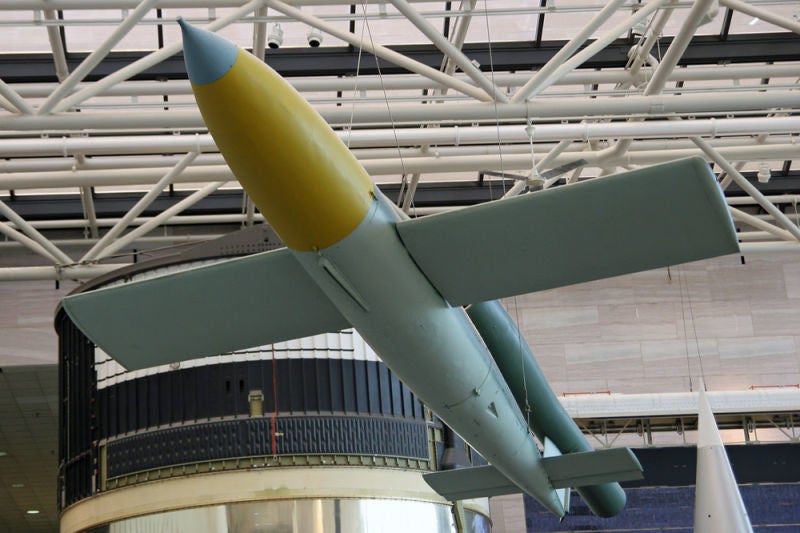
June 12, 1944 – The first V-1 flying bomb falls on England. The V-1 flying bomb, along with the V-2 ballistic rocket, were known to the Germans as Vergeltungswaffen , or retaliatory weapons. The Allies often referred to them as vengeance weapons, and with their deployment in the waning years of the war, the V-weapons are often seen as the last gasp of a desperate Germany as it was faced with the inevitable prospect of losing WWII. But the history of the V-1 actually began began 3 years before the war, with the work of German engineer Fritz Gosslau to develop remotely-controlled aircraft in 1936. In 1939, the Reichsluftfahrtministerium (German Air Ministry) received a proposal for a flying bomb that could carry a 2,200-pound payload over 300 miles, and even though most of the problems with the guidance system were worked out by 1941, Adolf Hitler did not approve the project until June 1944, soon after the Allied invasion of occupied Europe on D-Day . The V-1 featured a welded sheet metal fuselage, plywood wings, and was powered by a pulsejet engine, the first of its kind to power an aircraft. The distinctive sound of the pulsejet led to the V-1 being given the nicknames “buzz bomb” and “doodlebug” by the Allies. It was controlled in flight by an internal gyroscope, and once the propeller-driven odometer indicated the target had been reached, explosive bolts disabled the control system and the V-1 entered a dive towards the target. Though fairly inaccurate at first, refinements in the control system eventually enabled the V-1 to strike with an accuracy of roughly 7 miles around the intended target. This certainly wasn’t accurate enough for use as a tactical weapon, but as a strategic weapon of terror it was close enough, as most of its targets were large cities and their civilian populations. At the peak of operation, more than 100 V-1s per day were fired at southeast England, but due to continuing problems with guidance systems and poor engine reliability, only about 25-percent of the buzz bombs actually hit their intended targets. Nevertheless, over 6,000 British civilians fell victim to the V-1. In addition to the ground-launched bombs, about 1,200 V-1s were also air-launched from modified Heinkel He 111s which increased their operational range.
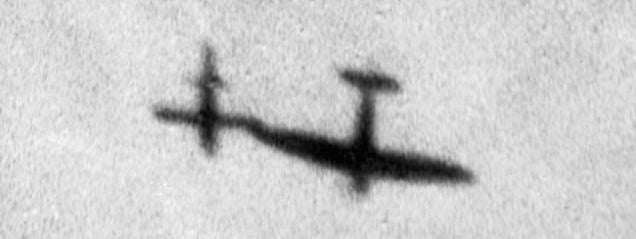
When the first V-1s appeared over England, the only aircraft fast enough to intercept the low-flying primitive cruise missiles was the Hawker Tempest , though eventually Supermarine Spitfires , North American P-51 Mustangs and Republic P-47 Thunderbolts were modified to increase their speed. De Havilland Mosquitos also proved relatively effective, and the early jet-powered Gloster Meteor claimed a few buzz bombs as well. The most effective method to stop the V-1s was to fly alongside, put a wingtip underneath the V-1's wingtip, then flip the flying bomb over, which caused it to crash. As the Allies started retaking France and began capturing territory in Germany, they overran the V-1 launch sites and the number of attacks dwindled sharply. Towards the end of the war, V-1s were launched against Antwerp and other sites in Belgium before the final launch site was captured in October 1944. While the bombs themselves weren’t terribly effective, the attacks did cause the Allies to divert about a quarter of their bomber force to attack the launch sites, often without effect. By the end of V-1 operations, 9,521 buzz bombs had been launched against England and Belgium, an impressive number that nevertheless had a negligible affect on the ultimate outcome of the war. (V-1 photo by the author; Spitfire vs V-1 photo via the Imperial War Museum )
!!! UNKNOWN CONTENT TYPE !!!
!!! UNKNOWN CONTENT TYPE !!!
!!! UNKNOWN CONTENT TYPE !!!
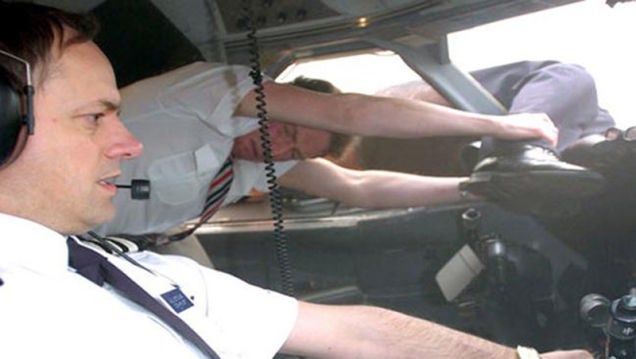
June 10, 1990 – British Airways Flight 5390 experiences explosive decompression, partially ejecting the airliner’s captain. During a routine flight from Birmingham, England to Málaga, Spain, the cockpit window of the British Aircraft Corporation One-Eleven (G-BJRT) separated from the fuselage at 17,000 feet. Captain Tim Lancaster was pulled half way out of the aircraft, and would have been ejected entirely had his legs not snagged on the control column. A flight attendant quickly grabbed the captain’s belt to keep him from being completely sucked out of the aircraft. Inside the cockpit, the crew could see Lancaster banging against the aircraft, and they were certain he was dead. But upon landing they found that he was alive and had suffered frostbite, bruising and fractures to his arm and hand. Flight attendant Nigel Ogden also suffered frostbite. Lancaster returned to work just 5 months after the incident. The cause of the accident was traced to the use of incorrect bolts to fit a replacement windscreen. (Reconstruction image via the National Geographic Channel )
!!! UNKNOWN CONTENT TYPE !!!
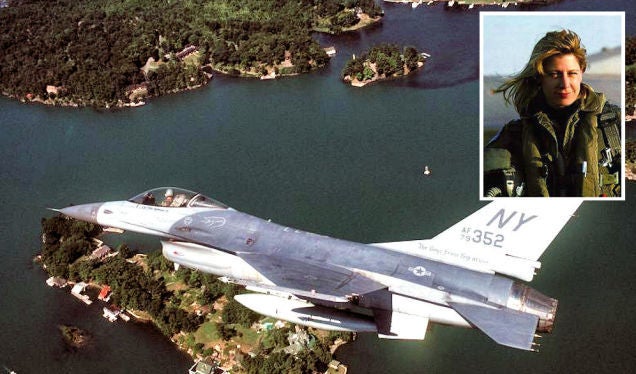
June 10, 1989 – Capt. Jacquelyn Parker graduates from the US Air Force Test Pilot School, becoming the first female USAF test pilot . Parker was the youngest student to attend the University of Central Florida at age 14, and its youngest graduate at age 17. Too young to join the Air Force, Parker began work as an intern at NASA and became their youngest full-fledged mission controller at age 18. Upon joining the Air Force, Parker became the first female instructor on the Northrop T-38 Talon and the first woman qualified to fly the General Dynamics F-16 Fighting Falcon . She is also a two-time winner of the Kitty Hawk Award for achievements in the field of aviation. Parker has accumulated over 3,000 hours flying more than 35 different aircraft, including the General Dynamics F-111 , McDonnell Douglas F-4 Phantom II , Lockheed C-141 Starlifter , Boeing KC-135 Stratotanker and the Sikorsky UH-60 Black Hawk . (F-16 photo via US Air Force; Parker photo author unknown)
!!! UNKNOWN CONTENT TYPE !!!
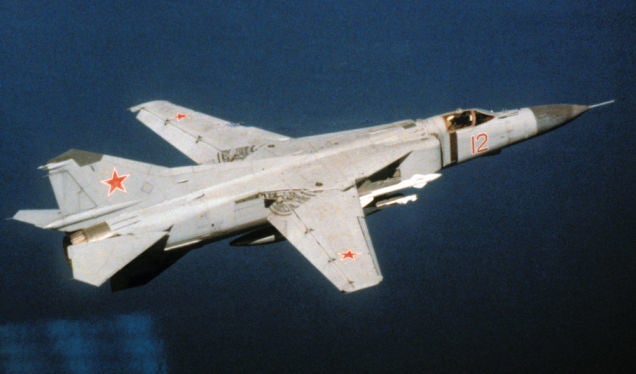
June 10, 1967 – The first flight of the Mikoyan-Gurevich MiG-23
(NATO reporting name Flogger), a third-generation fighter which, in spite of its variable-sweep wing, can be considered roughly analogous in mission to the earlier
McDonnell Douglas F-4 Phantom II
. The Flogger was the first Soviet fighter designed with
look down/shoot down
radar capable of picking out a target below the radar’s horizon and against the clutter of the ground beneath. It was also the first Soviet fighter to be armed with beyond visual range missiles. While a definite improvement over earlier Soviet designs, the Flogger was hampered by poor radar performance, and the fighter proved difficult to fly and expensive to maintain, suffering particularly from a short engine service life. Over 5,000 were produced, and though it was phased out of Russian service by 1999, the Flogger still serves many export customers.
(US Air Force photo)
!!! UNKNOWN CONTENT TYPE !!!
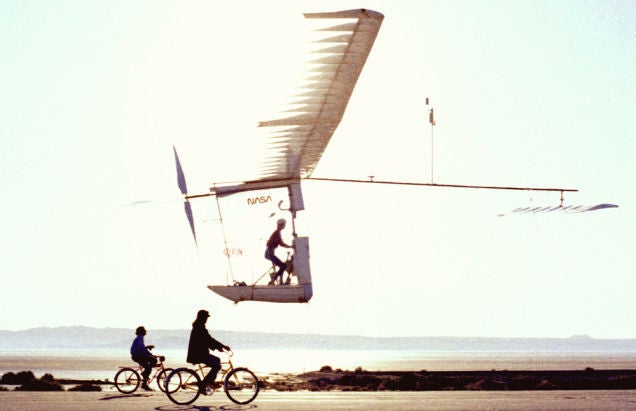
June 12, 1979 – The Gossamer Albatross flies across the English Channel. Designed and built by American aeronautical engineer Dr. Paul MacCready and built by his company AeroVironment , the Albatross was the first human-powered aircraft to cross the English Channel, claiming the second Kremer prize along with its £100,000 purse. The Albatross was MacCready’s second human-powererd aircraft after the earlier Gossamer Condor , which had won the first Kremer prize in 1974 for completing a one-mile figure-eight course. Powered and flown by amateur cyclist and hang glider pilot Bryan Allen , the Albatross completed the 22.2-mile crossing in 2 hours and 49 minutes at a top speed of 18 mph and an altitude of just 5 feet. (NASA photo)
!!! UNKNOWN CONTENT TYPE !!!
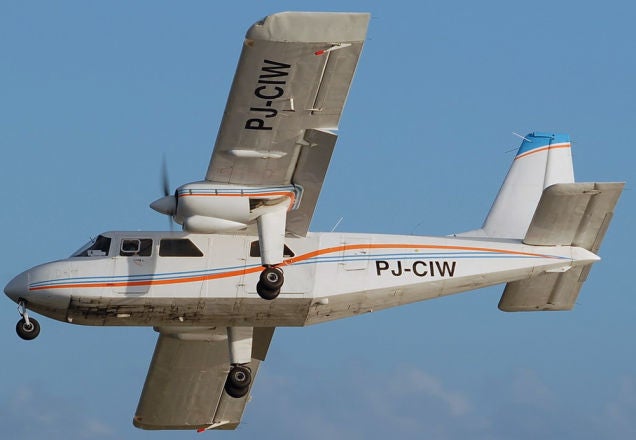
June 12, 1965 – The first flight of the Britten-Norman Islander, a light utility aircraft, regional airliner and cargo aircraft and one of the best-selling commercial aircraft produced in Europe. Designers John Britten and Desmond Norman developed the Islander to satisfy a demand for an inexpensive twin-engine transport, and sought to produce an aircraft that was capable of carrying heavy loads while still being simple to maintain. With 1,280 being built since 1965, the Islander has proven to be a tremendous success, and it remains in production today. The Islander was developed into numerous variants, and serves with the British Army and UK police forces, as well as over 30 military operators and many civilian operators worldwide. (Photo by Roland Nussbaumer via Wikimedia Commons )
!!! UNKNOWN CONTENT TYPE !!!
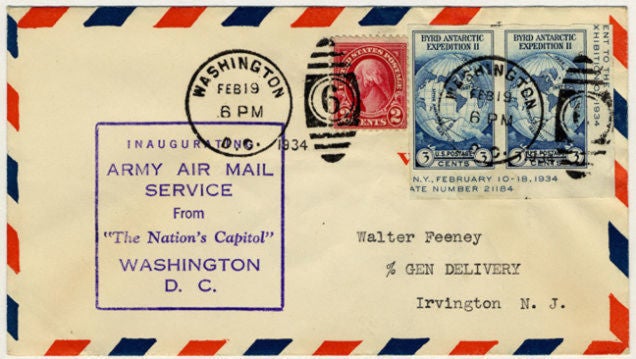
June 12, 1934 – The Air Mail Act of 1934 is enacted.
As a result of the
Air Mail Scandal
of the 1930s, and following congressional investigations into the awarding of Air Mail contracts to certain airlines, the Air Mail Act reintroduced competitive bidding for lucrative air mail routes and prevented aircraft manufacturers from operating passenger airlines. The new act superseded the earlier act of 1930, and resulted in the restructuring of the airline industry, new regulations for passenger flight, and the modernization of the US Army Air Corps. To circumvent the new restrictions, aircraft manufacturers simply changed their names, resulting in the creation of American Air Lines, Northwest Airlines, Eastern Airlines and United Air Lines.
(Image author unknown)
!!! UNKNOWN CONTENT TYPE !!!

June 12, 1930 – The first flight of the Handley Page Heyford, a biplane night bomber developed to replace the Vickers Virginia in RAF service. The Heyford arose from Air Ministry specification B.19/27 in 1927 which called for a heavy night bomber that could carry 1,546 pounds of bombs at a range of 920 miles, and it’s two Rolls-Royce Kestrel 12-cylinder engines provided a top speed of 142 mph. As the last biplane bomber to serve the RAF, the Heyford displayed an interesting mixture of both WWI-era and more modern construction, with metal frame, fabric-covered wings supporting an aluminum monocoque forward fuselage that housed a crew of 4 and a fabric-covered tail. Named for the base where it was first deployed, the Heyford entered service in 1933, eventually filling 9 squadrons by the end of 1936. With the arrival of more modern monoplane bombers by 1937, the Heyford was retired in 1939. (Photo via The Royal Air Force Museum )
!!! UNKNOWN CONTENT TYPE !!!

June 13, 1983 – Pioneer 10 becomes the first man-made object to leave the Solar System. Pioneer 10 is a space probe that was developed by NASA Ames Research Center and launched on March 3, 1972 to explore Jupiter. Pioneer 10 reached the largest planet in our Solar System in November 1973 and transmitted roughly 500 images as it passed as close as 82,000 miles to the planet. Following its successful flyby of Jupiter, Pioneer 10 became the first spacecraft to achieve escape velocity from the Solar System, and on January 23, 2003, at a distance of 12 billion kilometers from Earth, radio communications were lost when the transmitter ran out of electrical power. If left undisturbed, Pioneer 10 will continue towards the star Aldebaran more than 68 light years away, though it will require more than two million years to reach the star at its current velocity. (NASA illustration)
!!! UNKNOWN CONTENT TYPE !!!
!!! UNKNOWN CONTENT TYPE !!!
!!! UNKNOWN CONTENT TYPE !!!
!!! UNKNOWN CONTENT TYPE !!!
!!! UNKNOWN CONTENT TYPE !!!
!!! UNKNOWN CONTENT TYPE !!!
!!! UNKNOWN CONTENT TYPE !!!
If you enjoy these Aviation History posts, please let me know in the comments. And if you missed any of the past articles, you can find them all at Planelopnik History . You can also find more stories about aviation and aviators at Wingspan and Planes You’ve (Probably) Never Heard Of .
!!! UNKNOWN CONTENT TYPE !!!
 "Smallbear wants a modern Syclone, local Maple Leafs spammer" (smallbear94)
"Smallbear wants a modern Syclone, local Maple Leafs spammer" (smallbear94)
06/13/2017 at 12:43, STARS: 1
Re the 777 development, iirc the 737 had similar collaboration, though just from one airline. Lufthansa had a fair amount of input into it.
Awesome as usual :)
 "MonkeePuzzle" (monkeypuzzle)
"MonkeePuzzle" (monkeypuzzle)
06/13/2017 at 13:21, STARS: 3
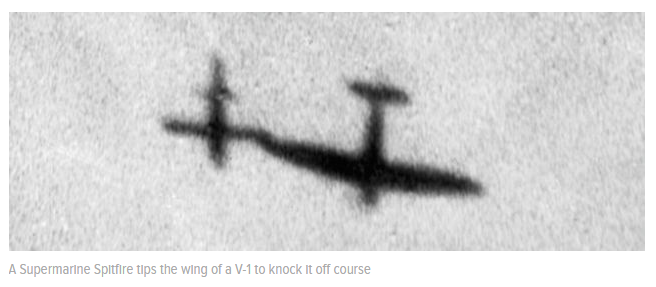
THAT IS SO BADASS!
 "thejustache" (thejustache)
"thejustache" (thejustache)
06/13/2017 at 13:36, STARS: 1
Seriously! I’ve read up on the buzz bombs before but had never heard of that until now. WOW
 "S65" (granthp)
"S65" (granthp)
06/13/2017 at 13:40, STARS: 2
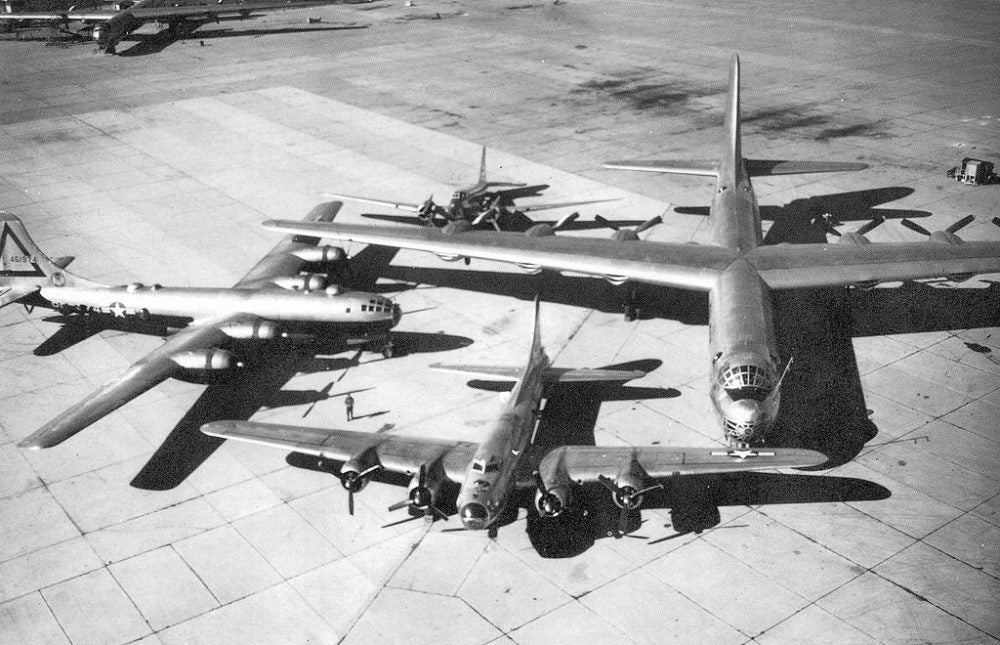
I’ll be going to the Air & Space museum in D.C tomorrow, anything I should check out there?

06/13/2017 at 13:55, STARS: 1
The Fi-103 (in the form of the Republic/Ford JB-2 Loon ) almost played a part in the US invasion of Japan ( OPERATION DOWNFALL ). Pieces of V-1s from England were shipped to Wright Field in Ohio, and Republic and Ford were chosen to reverse engineer the fuselage and power plant respectively. The first JB-2 was launched in December of ‘44, and plans were made to build as many as seventy five thousand to be launched at Japan from B-17s, B-29s, PBY4 Privateers , submarines and LSTs. The success of the Manhattan Project shelved those plans, but still nearly fifteen hundred JB-2s were built, and tests persisted into the early Fifties.
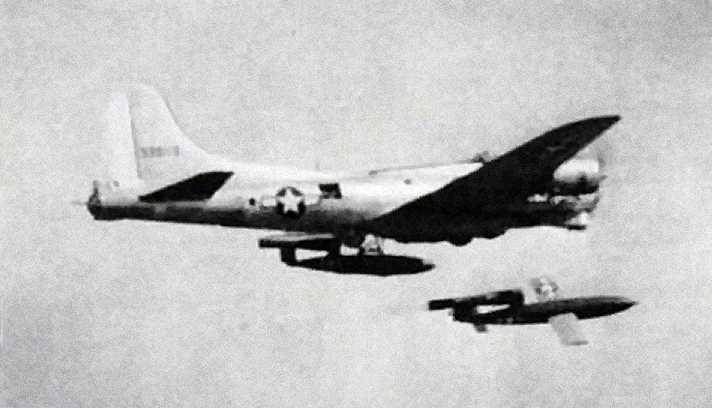
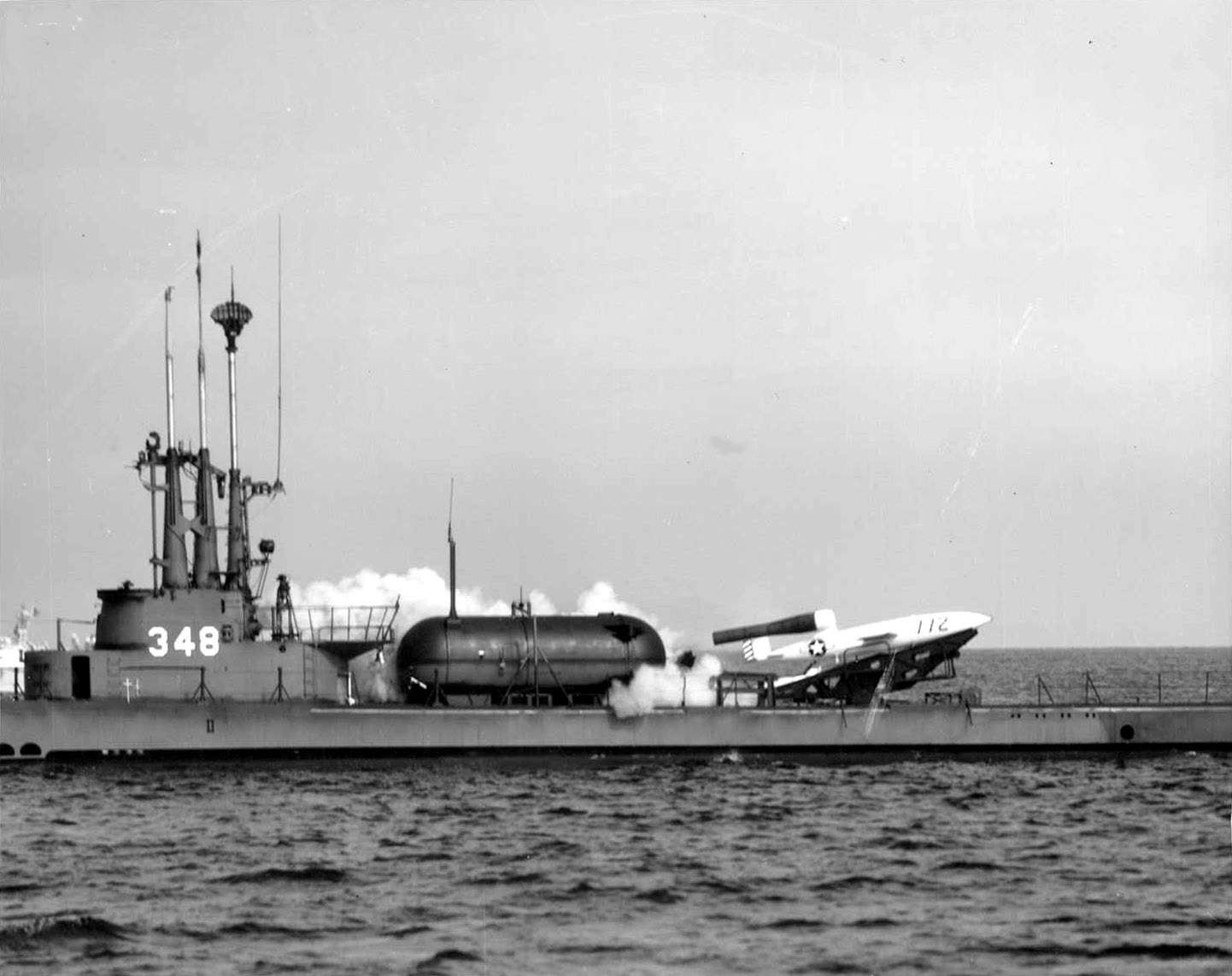
 "facw" (facw)
"facw" (facw)
06/13/2017 at 14:19, STARS: 1
Everything, though my favorites are the X-1, the X-15, and the F-104. Those are all pretty hard to miss though.
 "ttyymmnn" (ttyymmnn)
"ttyymmnn" (ttyymmnn)
06/13/2017 at 15:03, STARS: 0
I did not know that. Thanks. It helps make a little more sense of this photo. I always thought they were testing them to power an airplane, but they might have been testing them for this project.

 "ttyymmnn" (ttyymmnn)
"ttyymmnn" (ttyymmnn)
06/13/2017 at 15:07, STARS: 1
As facw said, everything. But if you’re only going to the ASM and not the Udvar-Hazy Center, then I would suggest you focus on the things that interest you. They try to cover absolutely everything in one relatively small space, and it can be very crowded. But the real showstoppers are in the main hall.

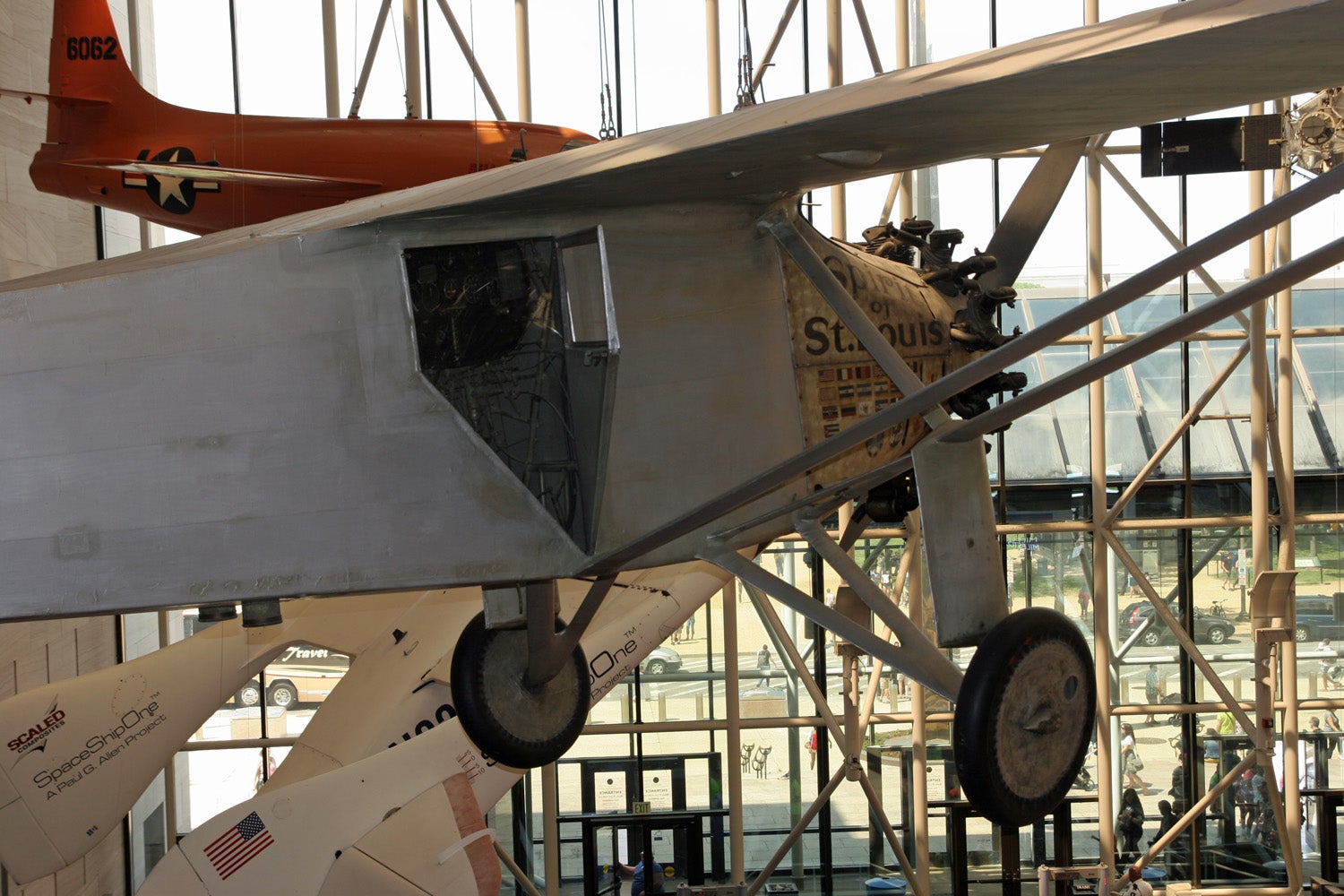
Be sure to touch the Moon rock.
 "ttyymmnn" (ttyymmnn)
"ttyymmnn" (ttyymmnn)
06/13/2017 at 15:07, STARS: 1
Thanks!

06/13/2017 at 15:19, STARS: 1
Yup. Ford built PJ31s which were copies of Argus As014 recovered from downed Buzz Bombs.
I can’t get to any of the pages that detail this mod at work, beyond the fact that it was done after the war, so they might have been trying to use the PJs to speed up the ‘Stang, since by that point the Loons were already being used for target practice.